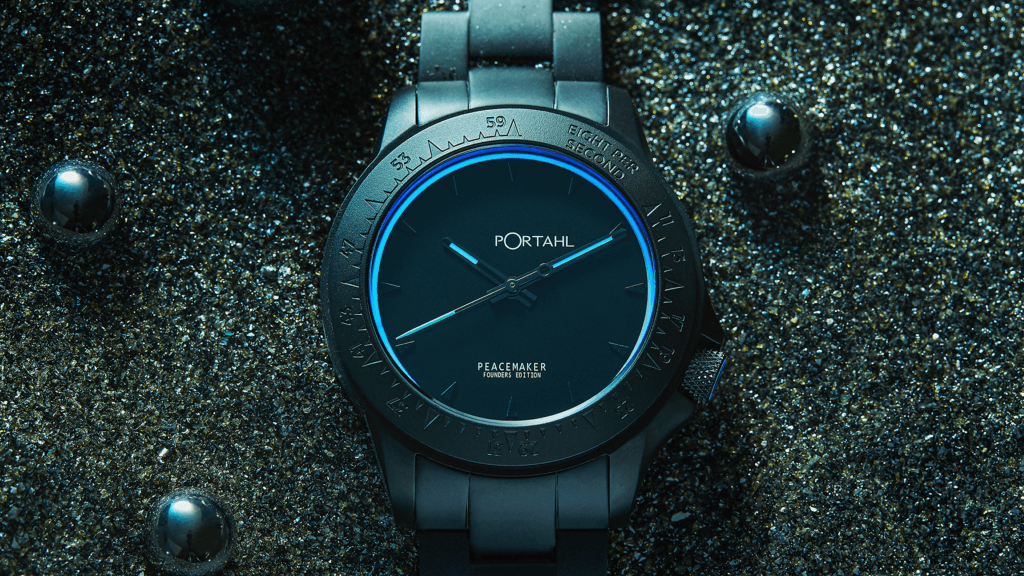
Shining a Light on Super-LumiNova®: A Brief History of Lume in Watches
Lume has been used on watches for over a century to make them readable in the dark. Super-LumiNova® is a popular and effective choice for modern watches due to its brightness and longevity. Other challengers to Super-LumiNova® include tritium and Seiko's LumiBrite. However, people are often disappointed or get different results with lume than they see in pictures due to its brightness being affected by weather, environment, season, or light pollution.
The Early Days of Lume in Watches
The first watches to use lume were military timepieces, which needed to be legible in the dark for soldiers to coordinate attacks and maneuvers. In the early 1900s, radium-based lume was introduced, which was highly effective but also dangerous due to the radioactive properties of radium. Over time, safer alternatives were developed, including tritium-based lume and photoluminescent pigments like strontium aluminate.
The Invention of Super-LumiNova®
While tritium-based lume and other photoluminescent pigments were effective, they had limitations in terms of brightness and duration of glow. That’s where Super-LumiNova® comes in. Super-LumiNova® is a variant of LumiNova, a photoluminescent pigment that was invented by Kenzo Nemoto in Japan. However, the Swiss-based RC Tritec AG company brokered a deal with Nemoto & Co to mass-produce a LumiNova variant. Super-LumiNova® came into being not long after LumiNova started being used to make watches phosphorescent. Today, RC Tritec AG is the leading producer and distributor of phosphorescent pigments for the watch industry. Whether divers sought out lume because they wanted to wear a waterproof watch while diving deep under the sea, or racecar drivers needed phosphorescent watches to tell the time in the dark of their cars, Super-LumiNova® changed everything.
Why Super-LumiNova® is a Good Choice
Super-LumiNova® is a popular choice for watchmakers for several reasons. First, it is highly effective at absorbing and storing light, which allows it to glow brightly in low-light conditions for an extended period of time. Additionally, Super-LumiNova® is safe to use and does not contain any radioactive materials, unlike earlier lume technologies. Lastly, Super-LumiNova® is available in a wide range of colors, allowing watchmakers to create unique designs and color schemes.
Challengers of Super-LumiNova®
While Super-LumiNova® is a popular choice, there are other lume technologies available on the market. Some examples include Seiko’s Lumibrite and Citizen’s Eco-Drive technology, which uses light to power the watch’s movement and lume. While these technologies have their own advantages, Super-LumiNova® remains a popular choice for watch enthusiasts.
How Lume Works
So, how exactly does lume work? Lume is a photoluminescent material, which means that it absorbs light energy and then emits it slowly over time. It is typically made up of tiny crystals that contain phosphorescent compounds, such as zinc sulfide or strontium aluminate. When these compounds are exposed to light, they become excited and absorb energy. As they release that energy, they emit light in a process called phosphorescence. The brightness and duration of the lume's glow depends on the quality of the phosphorescent compounds used and how much light the lume is exposed to before it is used in the dark. The better the quality of the material and the more light it absorbs, the brighter and longer it will glow.
What Makes Super-LumiNova® a Good Choice?
Super-LumiNova® is a top-performing lume material because of its brightness and longevity. It's non-radioactive, non-toxic, and non-flammable, which makes it a safer choice for watchmakers and wearers. Super-LumiNova® also has a quick charging time and can glow for up to 12 hours in complete darkness, which is particularly useful for divers and other outdoor enthusiasts.
Challengers to Super-LumiNova®
While Super-LumiNova® is widely considered the industry standard for watch lume, there are other options available. For instance, Seiko's Lumibrite is a popular alternative to Super-LumiNova®, with many similar properties. Another popular option is Tritium gas tubes, which are self-powered and continuously glow without needing to be charged by a light source. However, Tritium is radioactive and has a limited lifespan, making it a less desirable option for some.
How Does Lume Work?
Lume works by absorbing light energy and slowly releasing it over time. The material is made up of tiny crystals that contain phosphorescent compounds, such as zinc sulfide or strontium aluminate. When these compounds are exposed to light, they absorb energy and become excited. As they release that energy, they emit light in a process called phosphorescence.
Why Do People Often Get Different Results With Lume?
One common issue with lume is that it can appear brighter in photographs than it does in person. This is because cameras are much more sensitive to light than the human eye. In addition, the brightness of lume can vary depending on environmental factors such as weather, season, and light pollution. For example, lume will appear brighter on a clear night than it will on a cloudy one. It's important to keep in mind that the brightness of lume is not a fixed value, and will vary depending on a variety of factors.
Conclusion
Luminosity has come a long way since the early days of radium-based lume. Today, Super-LumiNova®, used in pOrtahl's Peacemaker watch, is the go-to choice for most high-end watch brands due to its brightness, longevity, and safety. While there are other options available, Super-LumiNova® remains the industry standard for a reason and that's why we at pOrtahl have selected it.
